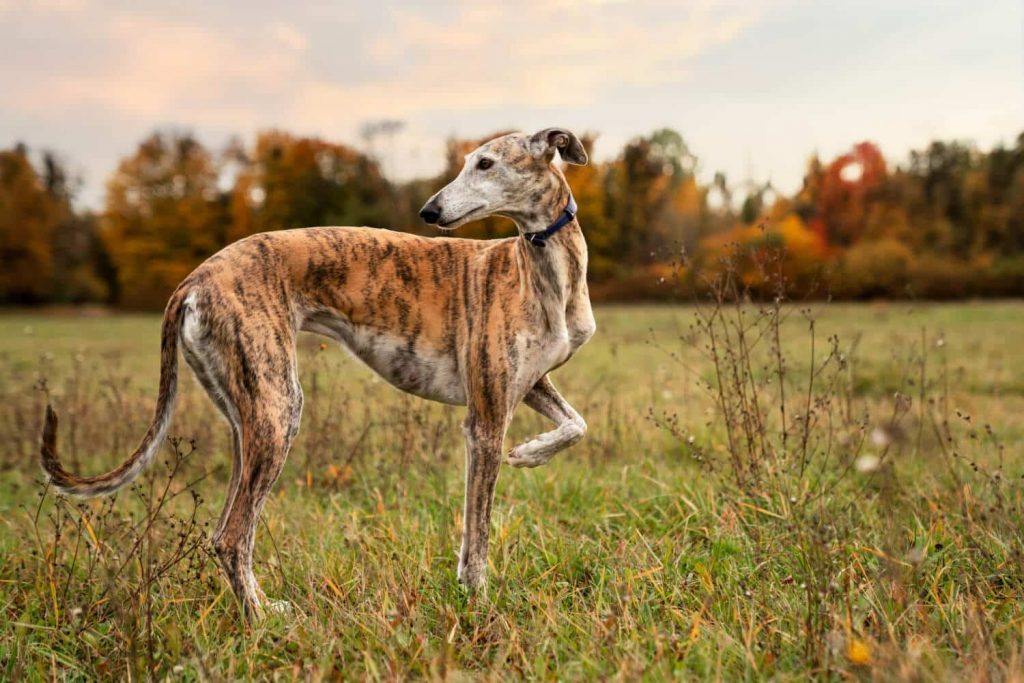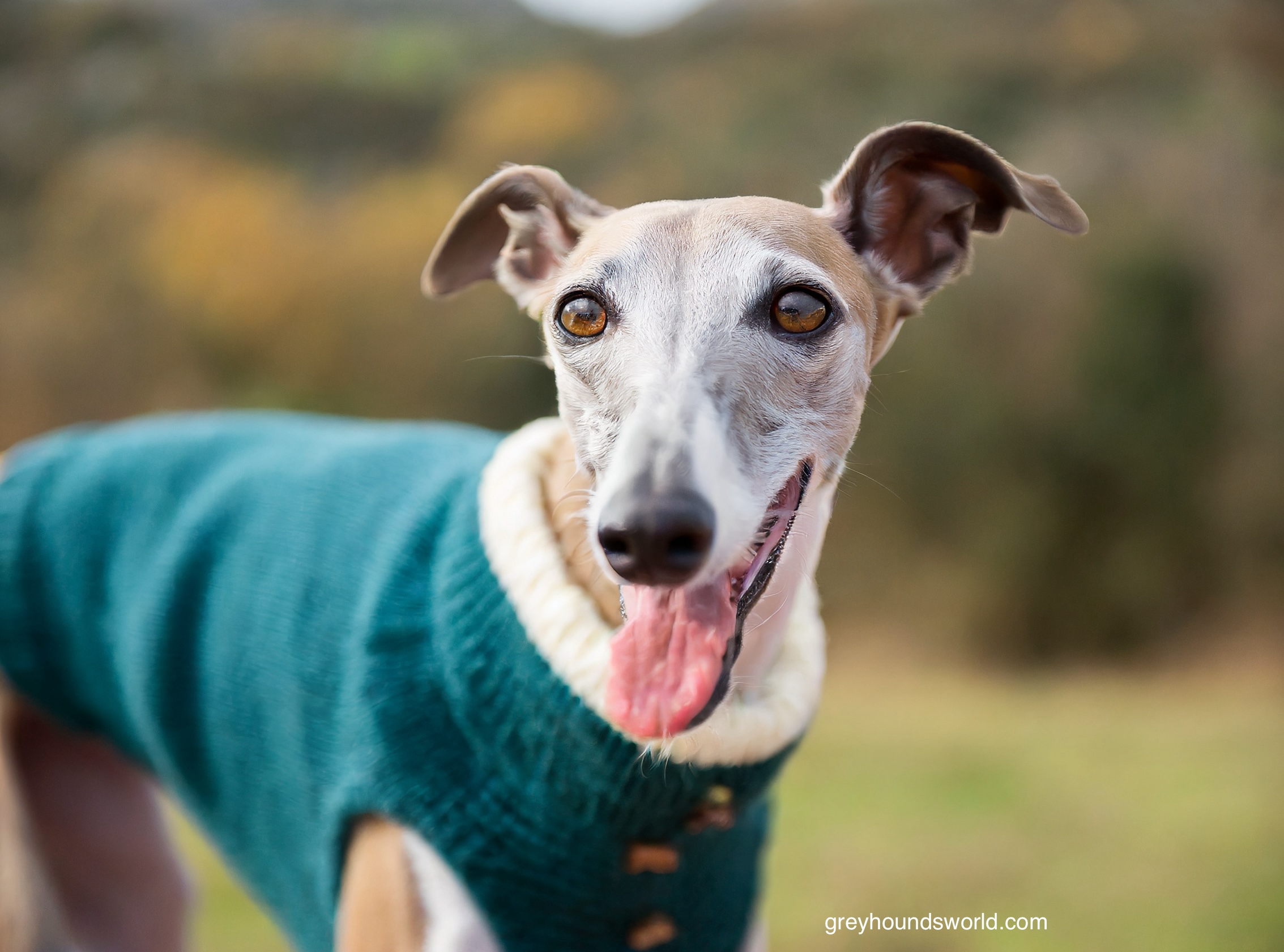The Spanish Greyhound, also known as the Spanish galgo, is a breed steeped in history and tradition. These lean, agile dogs have been bred for centuries for hunting and coursing. Famous for their speed and endurance, Spanish Greyhound are known to be gentle, affectionate and very adaptable companions.
Origin of the Spanish Greyhound
The Spanish Greyhound, or Galgo Español, has a fascinating and somewhat mysterious history. While theories abound regarding its exact origins, one widely accepted idea is that the Spanish Greyhound is the result of crossing the Irish Greyhound with either the Sloughi or the Scottish Deerhound.
This ancient breed, however, did not have a documented history until the early 20th century, making it challenging to trace its heritage with precision.
Historians believe that the Celts acquired various sighthounds from Phoenician traders, and later, when the Moors conquered Spain in the 8th century, they brought African sighthounds with them. It is conjectured that the Moors may have bred the Galgo Español with these unknown African sighthounds.
However, most of the Spanish Greyhounds seen today can be traced back to Irish Greyhounds due to their speed and endurance.
Appearance and Physical Characteristics
The Spanish Greyhound, also known as the Galgo Español, possesses distinctive physical attributes that contribute to its elegance and agility. Understanding these characteristics is essential for appreciating the breed’s unique appearance and capabilities.
Size and Proportions
They stand at a height of 61-68 cm. (24 to 27 inches) at the shoulder for males, and 58-68 cm. (23 to 27 inches) for females. On the other hand, Spanish Greyhounds weigh between 20 and 30 kilos (44-66 pounds), so carrying them will be very difficult (luckily they love to walk beside you on a lead anyway!).
Coat and Color Variations
The Spanish Greyhound comes in various coat types, including smooth and rough.
The smooth variety has short and sleek hair, while the rough variety features longer, wiry hair on the face, creating a distinguished mustache, beard, and eyebrows.
Coat colors can range from solid black, brindle, fawn, or white, often with markings or patches on the body.
Distinguishing Features
The Spanish Greyhound has a slim and athletic build, with a deep chest and well-developed muscles. They have long, slender legs enable them to reach impressive speeds, while their lightweight frame contributes to their agility. They have a black nose and dark, almond-shaped eyes that add to their alert and intelligent expression. Their life expectancy is between 12 and 15 years.

Temperament and sensitivity
Spanish Greyhounds are affectionate, sweet and very companionable dogs when they are confident. One thing that does not change over time is their love of couches of all shapes and sizes. Let’s find out a little more about this expert at napping around the clock.
Cautious with strangers, but pure love with family
A double story unfolds in the complex world of Spanish greyhounds. Their understated elegance shines through the caution and shyness they display in social situations. A secure environment allows their true grace to emerge. Beneath this reserved exterior, however, lies a heart bursting with affection. Spanish Greyhounds become avid cuddlers and form unbreakable bonds with their loved ones. Creating a safe and calm environment becomes the backstage pass to unveiling their true grace, helping to reduce anxiety and allowing their understated elegance to shine through.
Owners of your heart and your couch
In the serene world of the Spanish Greyhound, tranquillity reigns supreme. Known for their calm demeanour, these elegant dogs move gracefully through life with a composed and peaceful presence. While they revel in short bursts of exhilarating sprinting that showcase their innate agility, they are equally passionate about their love of leisure. Spanish Greyhounds move seamlessly from bursts of energy to couch potatoes, finding bliss in long, luxurious naps on the sofa. It’s a delicate balance where the thrill of the race meets the serenity of a cosy spot, creating a harmonious symphony in the lives of these majestic companions.
Interaction with Children and Other Pets
- Spanish greyhounds are known for their noble and friendly nature, especially with children. They display patience and sweetness when spending time with the youngest members of the household. It is important to supervise interactions and teach children to be respectful of their canine companions, as with any breed of dog. Adopting a Spanish Greyhound brings a whirlwind of leggy joy into your life. Get ready for a furry and interactive adventure that you will never forget!
- Although the chase for prey has run through the veins of the Spanish Greyhound for generations, these sleek dogs surprise by being friendly companions to smaller animals. Yes, you read that right! Cats and tiny dogs enter their circle of friends without causing chaos – it’s like an ongoing animal party! Sure, this harmony requires a little bit of parenting magic, but who said greyhounds weren’t masters of interspecific relationships?
Training and exercise needs
Training and socialization are key aspects of raising a well-behaved and balanced Spanish Greyhound. These intelligent and sensitive dogs respond best to positive reinforcement techniques and patient, consistent training methods.
Daily Exercise Needs
Daily exercise is essential for the health of any dog. However, if you have a Spanish Greyhound as your companion, you should take this point with a little more seriousness and commitment.You can try these options:
- Provide daily physical activity: Spanish Greyhounds thrive on daily exercise routines. Engage them in brisk walks, runs, or jogs to help burn off their energy. Aim for at least 30 to 60 minutes of exercise each day.
- Off-leash playtime: These sighthounds love to stretch their legs and run freely. Find a safe and secure area where they can enjoy off-leash playtime, such as a fenced yard or a designated dog park.
- Vary exercise routines: Keep their exercise routines interesting and diverse. Alternate between different activities like running, playing fetch, or participating in agility courses to prevent boredom and keep them motivated.
Mental Stimulation and Training
Along with physical exercise, mental stimulation is important for Spanish Greyhounds. Engage them in interactive puzzle toys, obedience challenges, or scent games to keep their minds sharp and prevent boredom-related behaviors.
Health and Care Guidelines
The health and proper care of your Spanish Greyhound will ensure a long, happy and adventurous life. Although they are considered to be strong and healthy dogs, regular visits to the vet, a balanced diet and recommended exercise are essential to prevent any potential problems with your favourite puppy.
Common Health Issues
The Spanish Greyhound is generally a healthy breed. However, like any dog, they can be prone to certain health issues that you should be aware of. Here are some key health concerns to consider when caring for a Spanish Greyhound:
- Gastric Torsion: Spanish Greyhounds can be susceptible to gastric torsion, also known as bloat. This is a serious and potentially life-threatening condition that requires immediate veterinary attention. It is important to monitor their diet, avoid overfeeding, and prevent vigorous exercise immediately before or after meals to reduce the risk of gastric torsion.
- Hip Dysplasia: Just like other larger dog breeds, Spanish Greyhounds may develop hip dysplasia. This is a genetic condition that affects the hip joint and can lead to arthritis and mobility issues. Regular exercise, a balanced diet, and maintaining a healthy weight can help minimize the impact of hip dysplasia.
- Bone Cancer: Spanish Greyhounds may have a higher risk of developing bone cancer, particularly osteosarcoma. Early detection and aggressive treatment are crucial for managing this condition. It is recommended to schedule regular vet check-ups and monitor any unusual symptoms or changes in behavior.
Proper Grooming and Maintenance
- Grooming. Spanish Galgos are simple when it comes to grooming. A gentle weekly brushing with a soft bristle brush or grooming mitt is all you need to say goodbye to loose hair. Be prepared for extra shedding in the pleasant autumn and spring seasons, which require more frequent brushings to keep things tidy. As for baths, a refreshing bath about once a month is sufficient, adjusting as needed based on your dog’s adventures in searching for dirt.
- Dental Delights: Maintaining your Spanish Greyhound’s oral health is a must to ward off any unwanted issues. For adult adoptees, a vet’s touch can kickstart the process with a professional cleaning to bid adieu to tartar buildup. Post that, your job is to keep the dental love alive with regular at-home cleanings. Grab a soft brush and some pup-friendly toothpaste for the perfect smile.
- Nail Care: Those lengthy nails might be making a click-clack symphony on the floor, signaling it’s time for a trim. Opt for a DIY nail service at home or let the professionals handle the ‘paw-dicure’ if that’s more your style. Keeping those nails in check ensures your Spanish galgo’s paws are always ready for a graceful stroll.
- Ear Care: Regularly inspect your dog’s ears, focusing on the external areas. If cleaning is deemed necessary, use a cotton ball moistened with a specialized cleaner. Avoid introducing water or foreign objects into your Spanish Greyhound’s ears. If any signs of inflammation, such as redness, arise, consult your vet promptly for further evaluation and treatment.
Is the Spanish Greyhound your ideal mate?
| Pros | Cons |
|---|---|
| Loving, loyal and companion. | Low tolerance to extreme climates, both hot and cold. |
| Easy coat grooming. | High prey drive |
| Suitable for living in small houses and apartments. | High exercise level |
| It is one of the few dog breeds that actually smiles. | They are usually fearful due to their past mistreatment. |
| Good relationship with children and other pets. | If you don’t watch out, it takes over your couch. |
